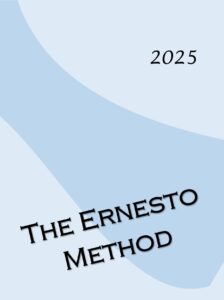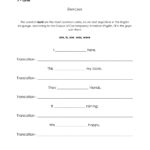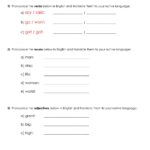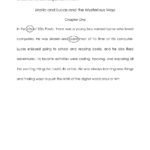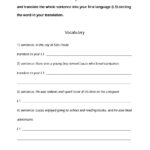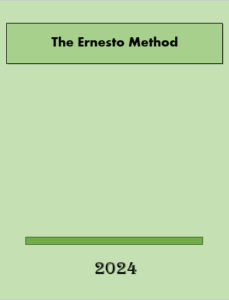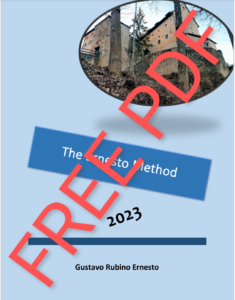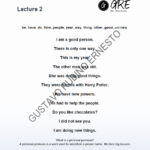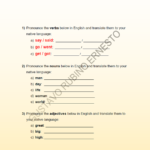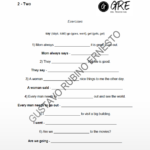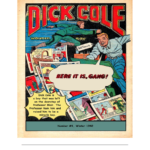If you want, every Jan 1st, I will send you an email telling you that the new version is out, just sign in REMINDER.
Ernesto Method 2024
Ernesto Method 2023
The PDF 2023 version comes with ads, logos, and watermarks. It is free but the printing doesn’t do too well. It is a version to be used online or to get a taste of the Ernesto Method.
Instead of teaching “Hello, what is your name?” on your first day of school, you should focus on the most common verbs, nouns and adjectives. This way your students will achieve English independence much faster, which should be the goal of every English teacher.
It is important to state that, this is a collaborative idea between its creator and teachers around the globe. It is free and easy to adapt to any classroom and it is to teach students, from day one, the most frequent words in the English language.

First step:
The research began on the premise that students learn second languages by creating memories within each word and as the frequency occurrence of that word increases stronger the memories become.
English methodologies have been around for more than a century and most of the time they focused in form, grammar and error correction. These were the main issues regarding Grammar Translation Method and Audio-lingual Method, issues that Communicative Approach did not agree, suggesting that error correction can do more harm than good. In recent years, Communicative Language Teaching (CLT) minimized the importance of form and grammar but keep it necessary if learners want to develop high levels of accuracy in the target language. All these issues are well documented and experimented but the issue of how students start, how is English presented to them, and their first encounter with the language seems not to be an issue.
The corpora used was the British National Corpora (BNC). The British National Corpus (BNC) is a 100-million-word collection of samples of written and spoken language from a wide range of sources, designed to represent a wide cross-section of British English from the later part of the 20th century, both spoken and written. The creation of this methodology is based on three different queries made using the BNC. It accounts for the most frequent verbs, nouns and adjectives found on the restrictions set by the British National Corpora.
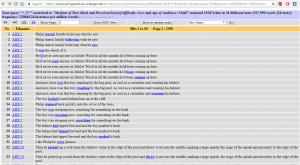
The restrictions on the query on the BNC account to 26 different children’s texts which total 517,990 words.
The most frequent verbs were deeming crucial for the understanding of the English language therefore the combination of verbs, nouns and adjectives obtained from the BNC corpora for the formation of construction were all based on a hierarchy that had the verbs on top.
Second step:
The Power Point brings the entire content of the methodology to the classroom.. Many of the issues presented were of linguistics nature, not well known by teachers, but they were presented in a very simple form with screen pictures of how the process was conducted. This first attempt of the methodology used Portuguese as a second language but any adjustments to a different language can be easily applied. The Power Point presentation can be checked on the Power Point lik below:
Third step:
A pre- and post-test based on the methodology was created. The whole test can be analysed on the pdf file that follows.
As an example here is the first question. In it a picture of a of a school girl carrying a backpack and a lunch box appears. The correct answer is the letter A. The sentence reads “The girl was in school”, the words that come closer to be identified by the student would be “girl” and “school”. The average answer by the students to question number one in the pre-test was 66,6% and the post-test was 86.6%.

Fourth step:
The idea of the methodology is simple. To present constructions (sentences) with the most stimuli possible fot the students in order for them to create a stronger synapse and therefore a memory of the word and its constructions.
Some examples follow:

The first construction given to students was “She was in school”. The verb “was” is the most frequent verb (6.72%)5 in the list of verbs created and citied before. The personal pronoun “she” is under a picture of a girl holding a lunch box and wearing a backpack (this picture will repeat itself six times, three other instances different pictures were used by the author to create new memories). The noun “school” is also under a picture. The noun in question is the 15th most frequent noun, occurring 0.42% of the time in the list of nouns.
The verb was written in a format that could be overwritten by the students. Therefore, reinforcing the experience and creating a memory.
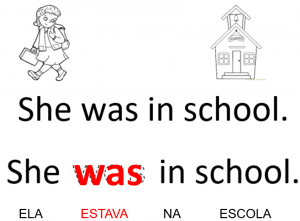
When a second key was pressed in the same slide the verb appears in red, as to instruct students on what to do. This happened to all slides that contained sentences presented to students, creating then a pattern for what to do and what word to focus on.
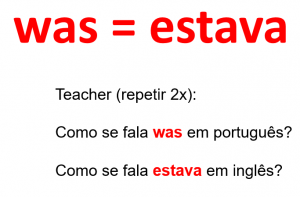
The verb was presented, isolated and in red with its translation clear to students. It was asked of the teacher or instructor to repeat twice the questions “How do you say was in Portuguese?” and “How do you say estava in English? This processed was also repeated with each single verb presented to students.

The second construction given to students was “She was at the house”. The same verb (“was”) and the same personal pronoun (“She”) was used in this construction. Two words come with pictures in this construction, the personal pronoun and the noun. The noun “house” is the 13th most common noun in the noun list, appearing 0.45% of the time. Once again the verb is written in a form that can be overwritten by students, the sentence is translated word-by-word, when a second a key is press in the same slide the verb appears in red, as to instruct the students on what to do, the next slide shows the verb isolated with its translation clear to students and again the teacher or instructor was asked to repeat twice the questions “How do you say was in Portuguese?” and “How do you say estava in English?”.
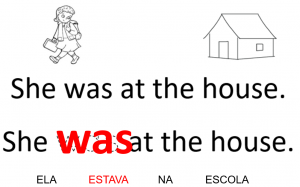
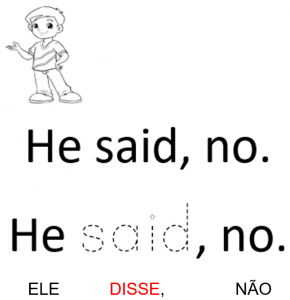
The third construction given to students was “He said, no”. The verb “said” is the second most frequent verb (4.20%) in the list created. The personal pronoun “He” is under a picture of a little boy (this picture will repeat itself three times). Once again, the verb is written in a form that can be overwritten by the student, and the sentence is translated word-by-word. Again the teacher was asked to repeat twice the questions “How do you say said in Portuguese?” and “How do you say disse in English?”.
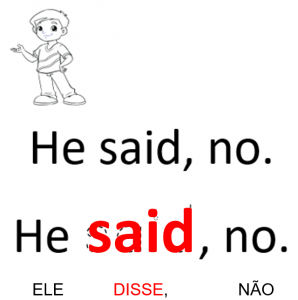
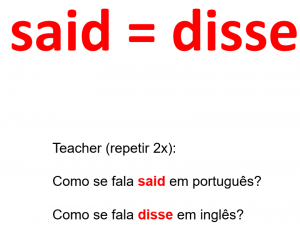
Fifth step:
A semester long methodology is being finished and will be released soon. It will have Portuguese as its second language but it has been built to easily change the second language. I hope you have enjoyed the idea behind my methodology and let me know what you think and if I can be of any assistance.

